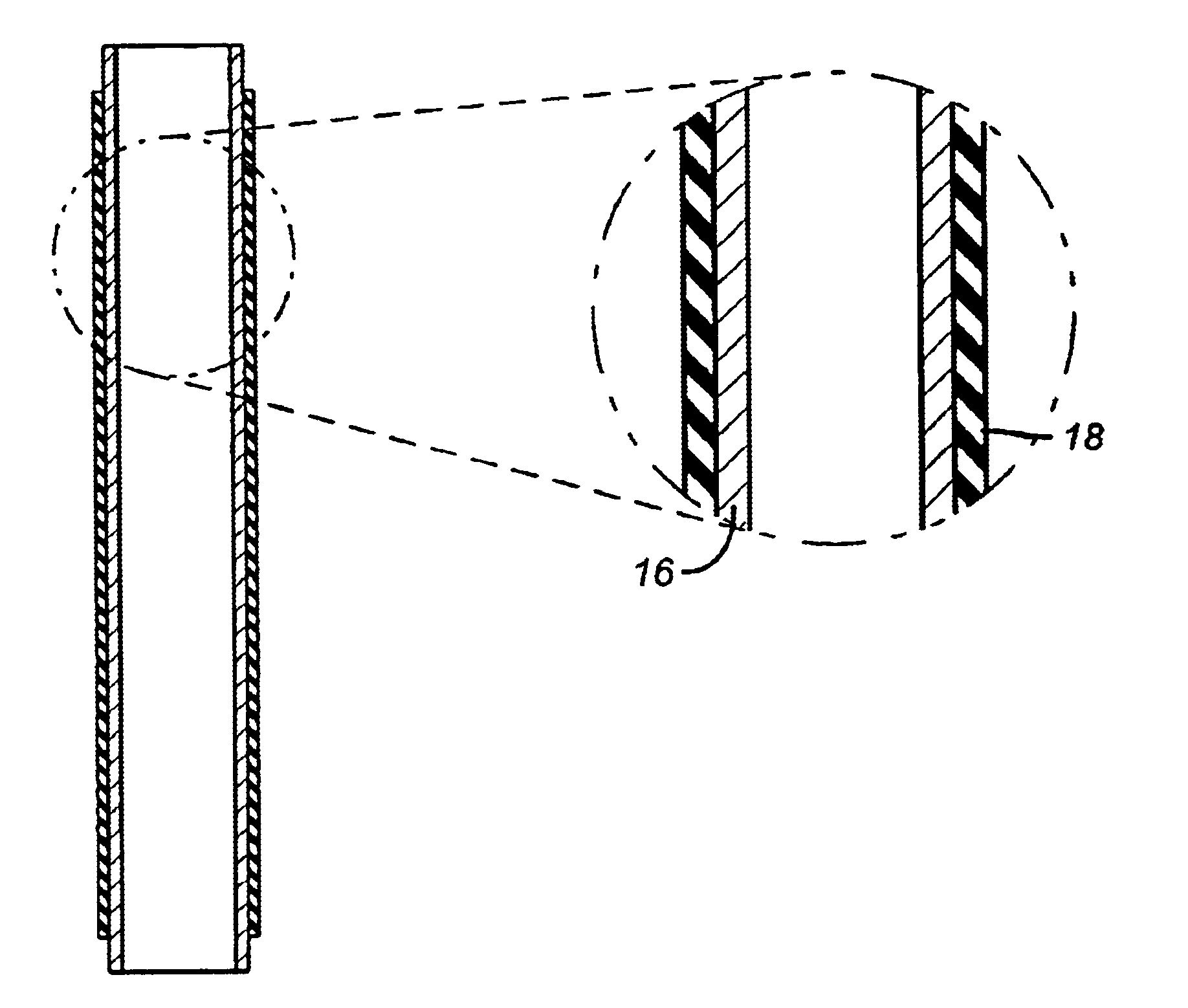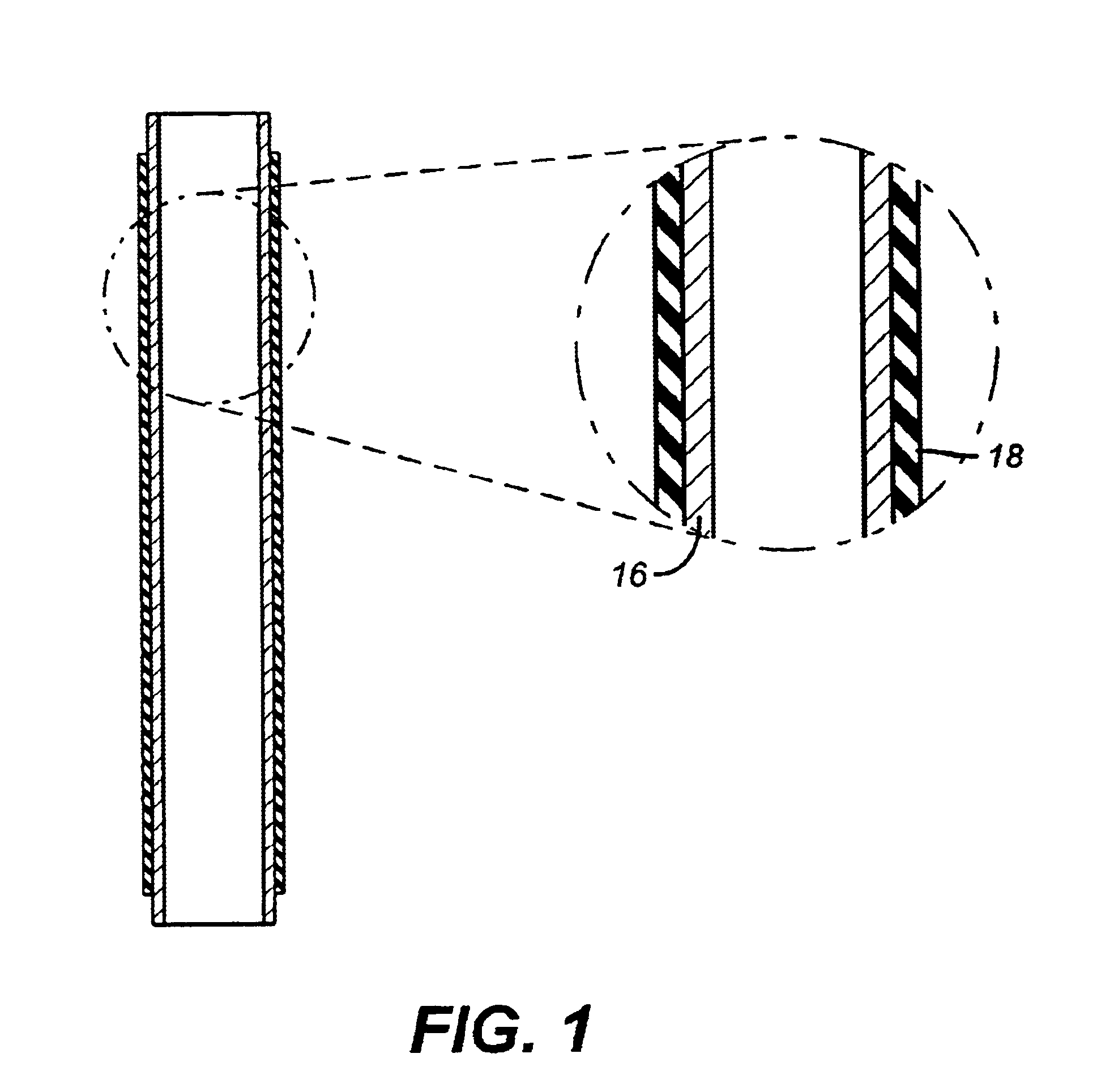Alternative method to cementing casing and liners
a technology of casing and cement, which is applied in the direction of drilling casings, drilling pipes, borehole/well accessories, etc., can solve the problems of equipment occupying significant space, requiring special equipment and specially trained personnel, and expensive procedures
- Summary
- Abstract
- Description
- Claims
- Application Information
AI Technical Summary
Benefits of technology
Problems solved by technology
Method used
Image
Examples
Embodiment Construction
[0012]FIG. 1 shows a typical stand of casing or liner 16 in a much longer string that is to be inserted at a desired wellbore location. The wellbore 12 that has already been cased with casing 14 is shown in FIG. 2. FIG. 3 shows the stand of casing or liner 16 inserted into the wellbore and overlapping with casing 14. Depending on the dimensions of the wellbore and the covering 18, the annular space 20 between string 16 and wellbore 12 could be sealed by swelling of covering 18 without physical expansion of the string 16. Optionally, as shown in FIG. 4, a swage, schematically illustrated as 22 can expand the string 16 before the covering has finished swelling and while voids such as 24 and 26 still exist. When the expansion is complete and the swelling stops, FIG. 5 is the way the assembly will look. The string 16 is supported from casing 14 and fully expanded to approximately the same diameter. Alternatively or additionally, a packer or some other annular blocking device 28 can be p...
PUM
 Login to View More
Login to View More Abstract
Description
Claims
Application Information
 Login to View More
Login to View More - R&D
- Intellectual Property
- Life Sciences
- Materials
- Tech Scout
- Unparalleled Data Quality
- Higher Quality Content
- 60% Fewer Hallucinations
Browse by: Latest US Patents, China's latest patents, Technical Efficacy Thesaurus, Application Domain, Technology Topic, Popular Technical Reports.
© 2025 PatSnap. All rights reserved.Legal|Privacy policy|Modern Slavery Act Transparency Statement|Sitemap|About US| Contact US: help@patsnap.com



